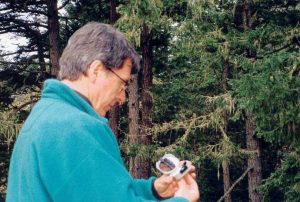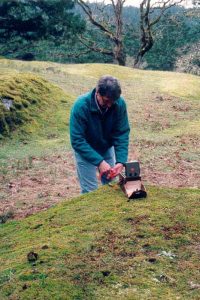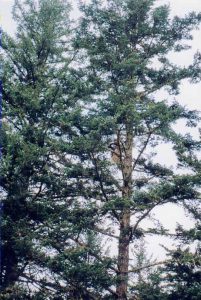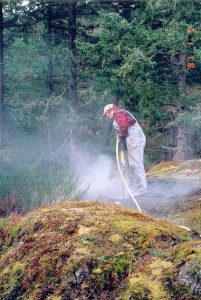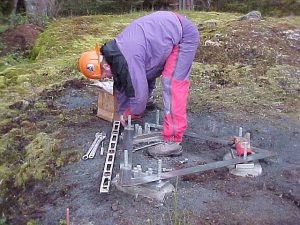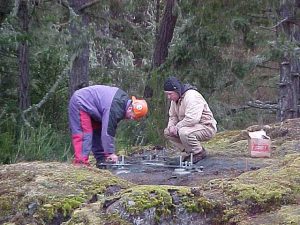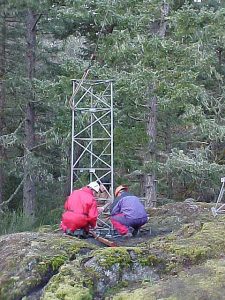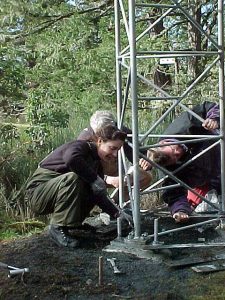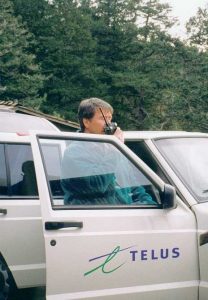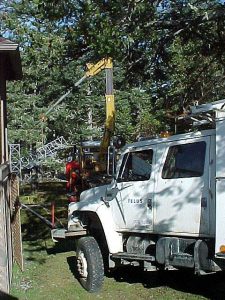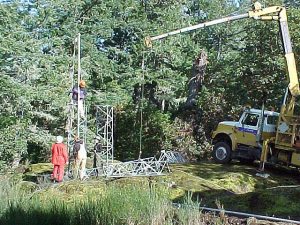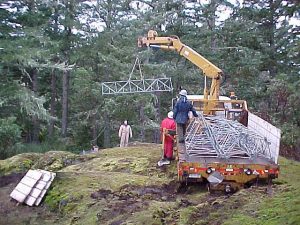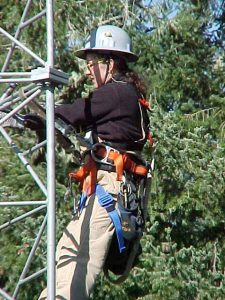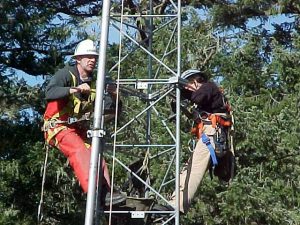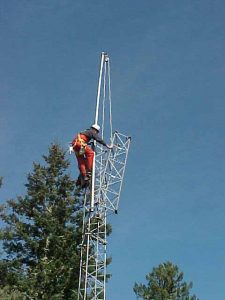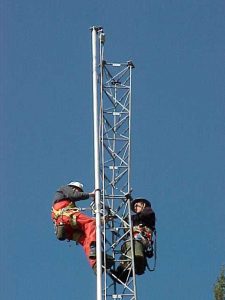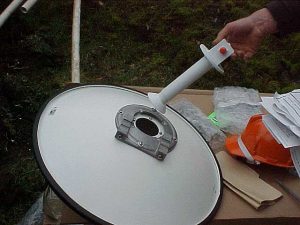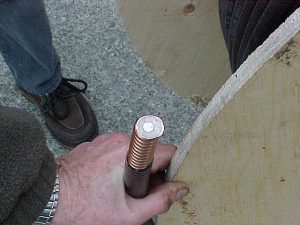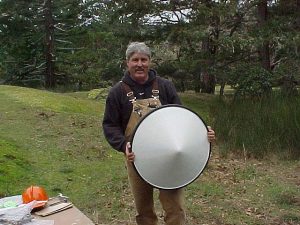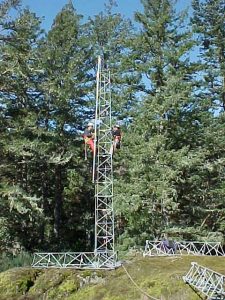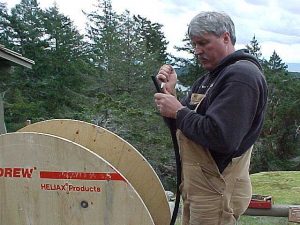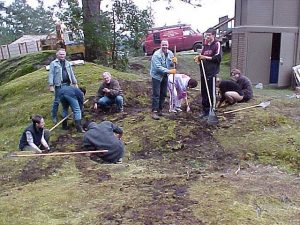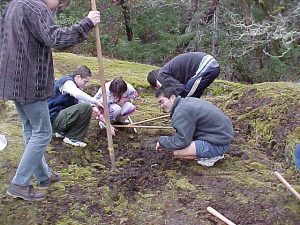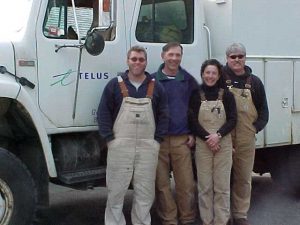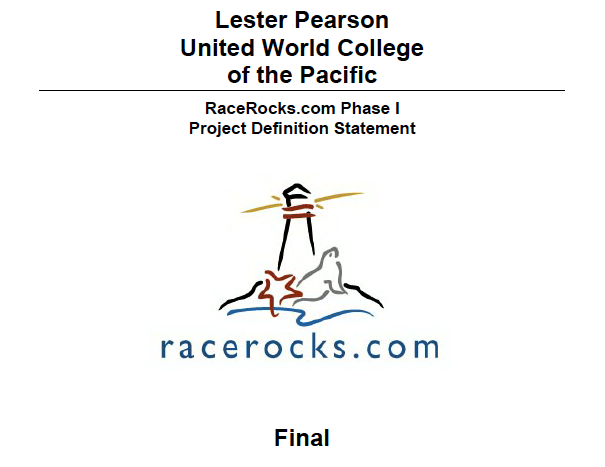Photos by Victor Rakou, PC student (Russia) —–Text by Peter Seem, PC student ( US)
On January 14th, 2000, Tom Bates, Paul Longley, and a Telus representative, along with Angus Macintosh and Scott Nichol, from LGS, came out to Pearson College. After a whirlwind tour of campus from Garry Fletcher, Biology and Marine Science teacher, and Angus Matthews, administration and finance director, the group headed out to Race Rocks along with several Pearson Students.The group’s main goal for the day was to find sites for the radio or microwave transceivers that would transmit data between the college and Race Rocks.
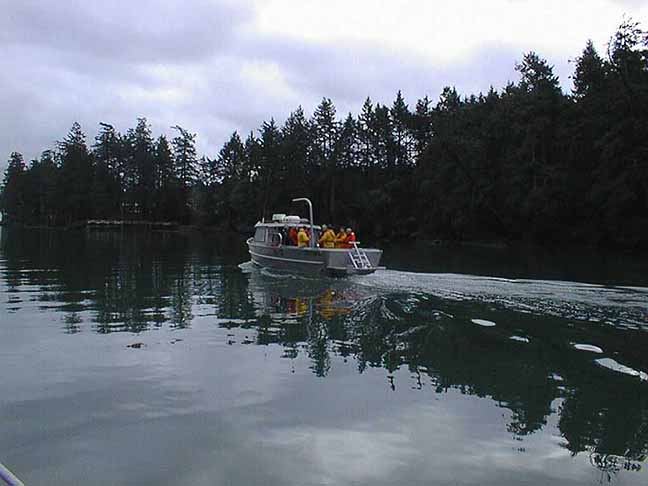
The transmission of data will be Telus’ contribution to the project. Paul Longley, from pre-sales technical support, and Tom Bates, with microwave engineering, were there to lend their expertise. LGS’ Aengus Macintosh was acting as project manager, and Scott Nichol was recording the work for the web page the IT firm would be helping to create.



Other options, the tops of local mountains, would require running a ground cable from the site to the college, which would be both time consuming and costly. Clearly, the best option present was to aim for a site just behind Pearson College’s observatory, which was relatively clear of trees and already connected to the internet by a high speed line.
While the group also needed to deal with finding sites and running power to all of the equipment on Race Rocks, their primary concern was the data transmission. In order to get undisturbed transmission they needed a clear line of sight between two stable sites. Any trees, foliage, or other obstructions, or small movements at either end, would break up the transmission. Indeed, even being too close to the water would generate refraction that could disturb data flow.The best solution found was to start from the highest point on Race Rocks, and aim up. From the top of the lighthouse, with the aid of a sighting scope, they took stock of the options: William Head, the closest point to the island, was deemed too low to the water to allow for a clean shot.
-
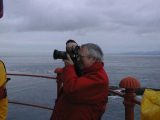
-
LGS’s Aengus MacIntosh
-
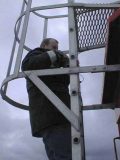
-
Scott Nichol climbs to the top outside.
-
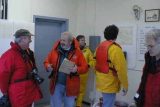
-
Angus Matthews leading the tour
-
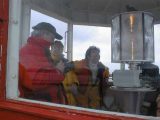
-
At the top of the tower
-
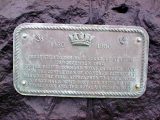
-
plaque at the base of the tower
-
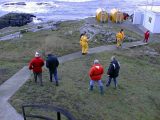
-
The group leaving the tower
-
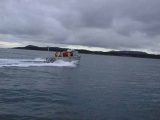
-
return to Pearson College
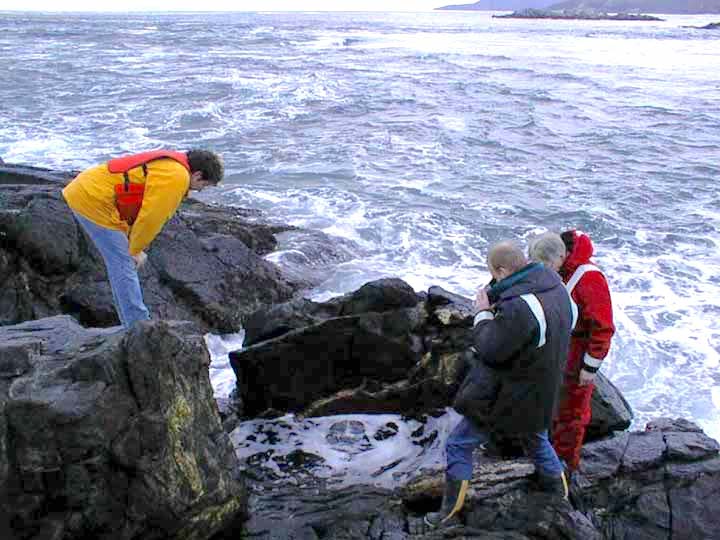
examining the tide pool on the west side
Garry took the group over to the tidepool that has been constructed on the West side of the island.
Plans were to install one small camera underwater in this pool to provide a window to view the emerging life and the frequent surge action .
This tidepool was rearranged and no longer functioning after the hurricane of 2006. Fortunately the underwater camera had not been installed!
=============================================
The observatory could be seen from the top of the lighthouse through a gap in the trees. The next question that had to be dealt with was whether any of the taller trees in between would provide an obstruction, and need to be topped. The prospect of gaining permission from the DND to take the tops off of one or two old growth trees on their property was frowned on because of the delays that would undoubtedly ensue. To get an answer, the team decided to take a look at the situation from the other end. A boat ride later, things weren’t much clearer. From within the dome of the observatory, it was very difficult to catch site of Race Rocks, or more importantly, the lighthouse. Despite Garry’s excited, “I see red! ” the mood was skeptical. Stripped black and white, with a red cap, the lighthouse should have stood out, if it was visible. The difficulty catching sight of it suggested that they would either need to be higher up or that a clean shot wasn’t going to be possible.
-
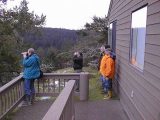
-
Trying to see RR from the observatory balcony
-
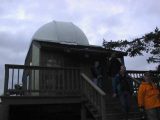
-
The observatory
-
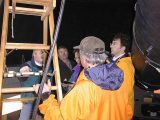
-
Climbing inside to look through the observatory door
No one was willing to go ahead with any other part of the project, trying to secure donors and expensive equipment, without being sure that this most fundamental requirement could be met. It was resolved that they would try a test the next day to find out just how high an observatory side tower would need to be, if indeed it was possible at all.
On January 15th, at noon at Pearson College there happened a strange sight. A giant red helium balloon flew high over the college, dancing in the breeze on a long tether tied to a banister at the observatory. While one part of the group headed out to Race Rocks, the other sent up the helium filled balloon.The helium filled balloon. Over radio from the lighthouse, they directed the balloon to be raised higher until they could see it, unmistakably and comfortably above any surrounding trees. The length of the tether, still well within the achievable height for a tower, was proof that a clear line for transmission had been found.
-
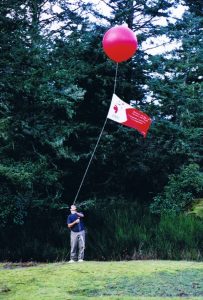
-
Dave with the helium filled balloon
-
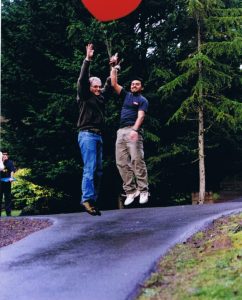
-
Dave and Garry.. goodbye!
The project is ready to move into actually constructing the tower, setting up the transmission equipment, and obtaining the cameras and sensors. They hope to have transmission established and two cameras up and running by March 11, 2000.
PROCEED TO NEXT UPDATE- FEB 6/2000


